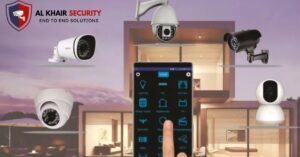Modern offices are developing much faster than ever. Once a simple workspace filled with desk and files has now become a high-technical environment where efficiency, creativity and safety co-existence. As businesses embrace digital changes, the demand for smart and secure workspaces is re -shaping the way companies plan and design their offices.
With progress in automation, artificial intelligence and smart surveillance, interiors of the office are becoming more responsible, connected and human centered. The future of the workpiece design focuses not only on aesthetics, but also on creating an environment that increases employee welfare, productivity and data security simultaneously.
The Rise of Intelligent Office Environments
Smart workpieces are built on the foundation of technology that improves comfort, convenience and control. Motion sensors, smart lighting and temperature automation have already become standard in many modern offices. But the future goes far ahead on it-thinking of workplaces that automatically adjust lighting based on personal preferences, AI-managed systems, which monitor air quality, or smart desks that track currency and remind employees to move to better health.
Such an intelligent environment also encourages better energy efficiency and stability. For example, sensors that detect unused meeting chambers can automatically provide electricity to equipment, reducing electric waste. This not only reduces costs, but also aligns with environment-conscious business goals. The beauty of smart workspace lies in how technology integrates in daily tasks, enhances both functionality and overall employee experience.
Security as a Core of Future Office Design
As the workplaces become smarter, the security design becomes a non-parasical factor in the scheme. Companies are now giving priority to office layouts and systems that protect both physical and digital assets. Advanced electronic surveillance services play an important role here, offering real -time monitoring that ensures people’s safety, data and infrastructure. From smart access controls and biometric systems to AI-managed video analytics, these technologies allow organizations to maintain 24/7 vigilance without compromising comfort or privacy.
Modern safety design also focuses on micro integration – camera and sensors that mix in beauty by offering full security. Psychological assurance of working in a safe environment enhances confidence and productivity among employees. In addition, with the increasing push on hybrid work, safe cloud access, and encrypted communication systems, the offices are now designed with cyber security in the core, which ensures smooth and protected cooperation between on-sites and remote teams.
The Balance Between Technology and Human-Centric Design
Even when the offices become rapidly automated, human experience remains at the center of design decisions. Smart systems are not to change people but to support them. Emphasis has been laid on personalization in the future field – employees should realize that the environment is favorable for their needs and not in another way. The light that adjusts the mood, acoustic panels, which absorbs unwanted noise, and furniture designed to support ergonomic welfare contribute to creating all spaces that balance the technique with comfort.
This overall approach also extends to mental and emotional welfare. Companies now include biophilic design principles – natural light, greenery and organic textures – to combat digital overload and increase concentration. The result is a scope that sounds safe, connected and emotionally attractive. Such an environment motivates innovation and cooperation while maintaining the efficiency of smart systems.
Role of Design Companies in Building the Future Office
To create a wise and safe workplace requires only more than technology – it demands thoughtful integration between design, functionality and user behavior. A specialized workspace design company in Gurgaon, can bring this expertise to a combination of architecture, technology and human psychology. These professionals consider how to balance open spaces with private sectors, monitoring the monitoring originally integrated, and the correct techniques for long -term scalability should be selected.
They design layouts that promote transparency while maintaining privacy. In addition, such companies help businesses in future proofs that can easily develop their spaces by incorporating modular designs that can be suited for easily developed technologies. From IOT meeting rooms to AI-based facility management systems, expert designers ensure that each square of the office contributes to foot productivity, efficiency and safety.
Conclusion
Smart and safe workspaces represent the next development of modern office design – places that not only look impressive, but also think wisely and also protect them. They merge innovation with functionality, making workplaces more efficient, durable and safe. As technology progresses, the future office will no longer be just a place to work; It will be an adaptive ecosystem that promotes development, cooperation and welfare. Today, business investing in designing these intelligent environments is more connected, productive and flexible for the future.






